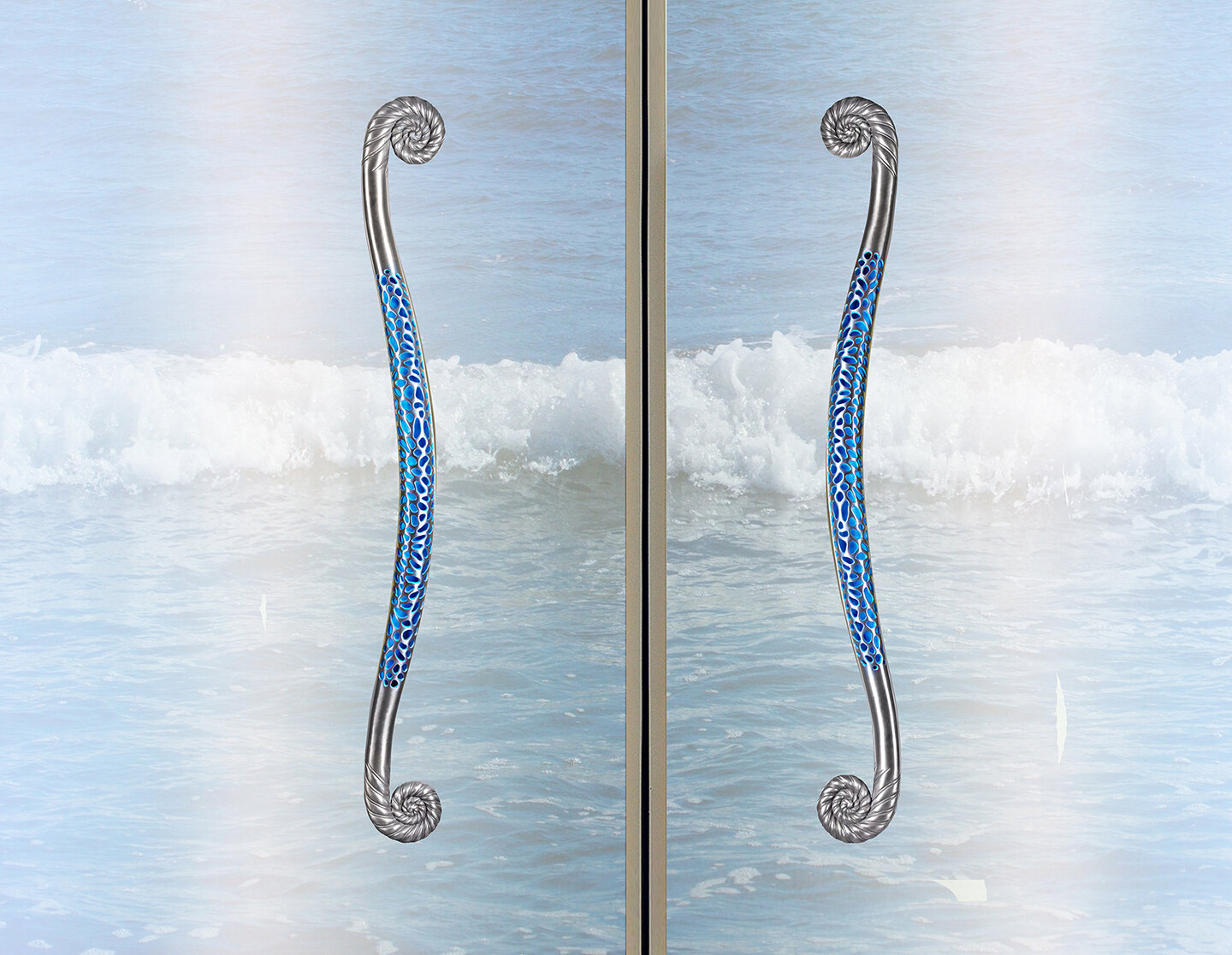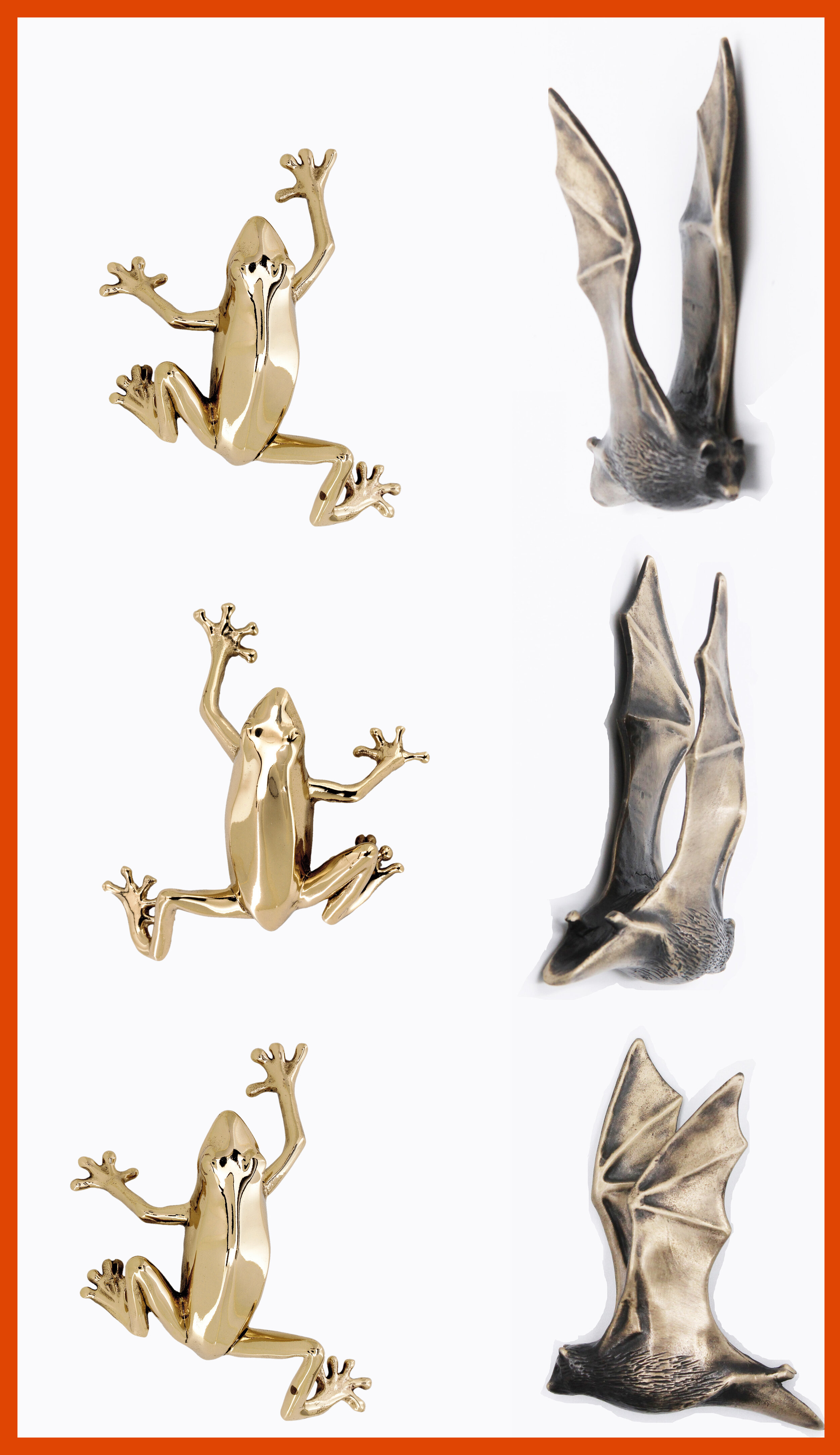The scroll serpentine handle was designed for Baha Mar, a beach front resort in Nassua the Bahamas and was created in response to a request from Michael Hong Architects who were the architects and designers for this project. The long curvaceous pull is part of the Morphic collection but the coral inspired design needed to better capture the oceanic nature of this resort. We chose to fashion the ends of the pull on the moon snail shaped seashell thereby making the piece more like the trident spear used by Neptune God of the Ocean in classical mythology.
The oceanic theme was further reinforced by a blue powder coat which we added to inside of the handle. At a height of 40” the new piece was appropriately scaled to suit the grand entry doors to the SLS resort Hotel.
The handle is cast in 3 sections and the 2 scroll ends are welded to the coral stem to form a seamless piece. Cast in stainless steel, the handle is both durable and rust resistant and as with all exterior hollow vertical grips there is a “weep” hole at the lower end for rainwater to drain through.
We are currently completing an order for this piece and have been inspired to design a new set of handles using the snail shaped ends. The scroll ends will be free standing handles and at a height of 6” will be well suited for more modestly scaled residential entry doors. Stay tuned to see or perhaps sea how this piece evolves.







































